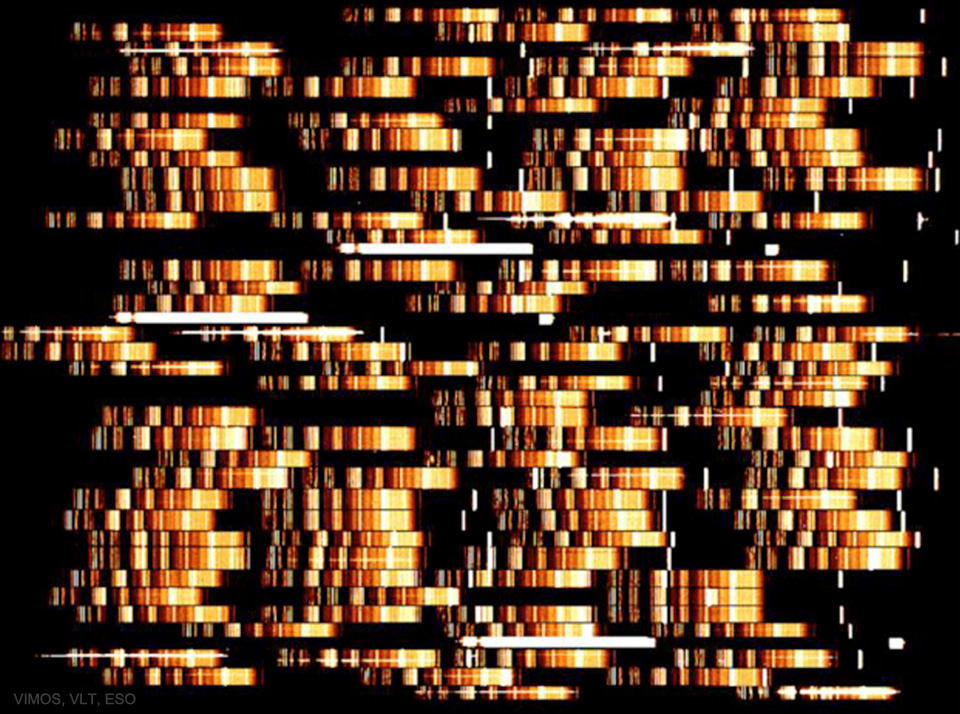2020年9月20日
Breaking Distant Light
Image Credit: VIMOS, VLT, ESO
Explanation: In the distant universe, time appears to run slowly. Since time-dilated light appears shifted toward the red end of the spectrum (redshifted), astronomers are able to use cosmological time-slowing to help measure vast distances in the universe. Featured, the light from distant galaxies has been broken up into its constituent colors (spectra), allowing astronomers to measure the cosmological redshift of known spectral lines. The novelty of the featured image is that the distance to hundreds of galaxies can be measured from a single frame, in this case one taken by the Visible MultiObject Spectrograph (VIMOS) operating at the Very Large Telescope (VLT) array in Chile. Analyzing the space distribution of distant objects will allow insight into when and how stars and galaxies formed, clustered, and evolved in the early universe.
Tomorrow’s picture: omega sun sailing
解析遥远的星光
影像提供: VIMOS, VLT, ESO
说明: 在遥远宇宙的那端,时间似乎流逝的较缓慢。由于时间膨胀之故,其星光会往光谱的红端偏移而产生红移的现象,天文学家们就可以用宇宙论时间膨胀的概念,来量测宇宙浩瀚的距离。在上图中,来自遥远星系的星光,已被分解它们的组成颜色 (亦即光谱),让天文学家能用已知的光谱线去量测其宇宙红移。此图的创新之处在于使用 位在智利的 极大望远镜阵列之多目标可见光光谱仪,只要取得单张影像,就可以同时量测这数百个星系的距离。分析遥远天体的空间分布,可以帮助我们深入研究在宇宙初期,恒星、星系、类星体何时以及如何形成、聚集成团与演化。
明日的图片: omega sun sailing







